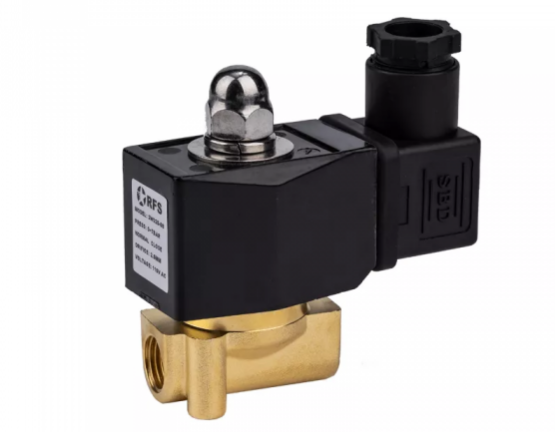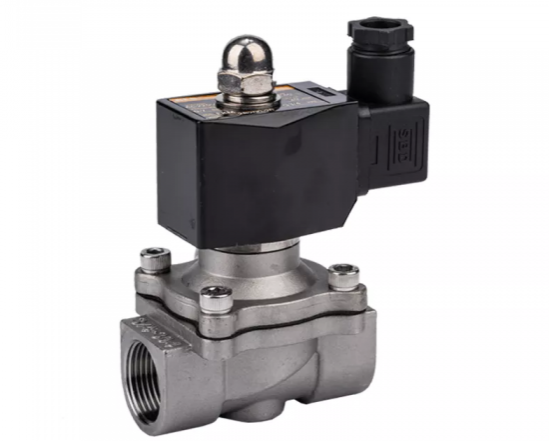What is the difference between an electric valve and a solenoid valve?
Distinguishing between electric and solenoid valves can be challenging, yet it becomes crucial when considering specific applications. Each valve system comes with its own set of advantages and disadvantages, finding use across a broad spectrum of applications. These applications span consumer products such as laptops, industrial equipment like cranes, medical devices like ECG machines, and even extend to military applications like fighter jets.
a. Operation
Electric valves are actuated by electric motors, resulting in valve action. There are two fundamental types: electric regulating valves and motorized shut-off valves. Shut-off valves further categorize into fully open and fully closed types. Typically, control valves are installed over electric valves, employing closed-loop regulation for enhanced stability.
In contrast, solenoid valves operate electromagnetically to overcome spring pressure and drive the spool action of the rotating coil. The operation of a solenoid valve can be likened to that of a light switch, although applied in a different context.
b. Switching Process
Electric valves are driven through motors and depend on analog adjustments. The on-off action in these valves can take some time for completion.
Solenoid coils on the other hand have a shorter operation time driven only through coils.
c. Application Process
Electric valves are used to both regulate and switch systems such as fan coil ends.
Solenoid is more suitable for specific requirements such as leaks and also while dealing with special fluids.
d. Practical Uses
Electric valves find applications in simulating the flow of liquid, gas, or wind systems through AI controls. They can also be employed in combinations of two or more valves to operate large valve systems.
On the other hand, solenoid valves are specifically utilized for liquid or gas control by passing an electric current through the solenoid.
Electric Valve: A Comprehensive Control Mechanism
Mechanism and Operation
Electric valves, as the name suggests, operate using an electric motor or actuator. These valves are designed for precise control over the flow of fluids and are commonly used in applications where automation and accuracy are paramount. The electric motor or actuator responds to a control signal, allowing for gradual and precise adjustments in the valve position to regulate the flow of the fluid.
Applications of Electric Valves
1. Industrial Processes: Electric valves are frequently employed in industrial settings, especially in processes that require accurate and automated control over fluid flow, such as chemical processing, water treatment, and manufacturing.
2. HVAC Systems: Heating, ventilation, and air conditioning (HVAC) systems often utilize electric valves for precise regulation of coolant or airflow, contributing to energy efficiency and temperature control.
3. Water Management: In water distribution and treatment systems, electric valves play a crucial role in controlling the flow of water to different zones, ensuring optimal distribution and pressure management.
Solenoid Valve: Swift and Efficient Fluid Control
Mechanism and Operation
Solenoid valves, on the other hand, operate using an electromagnetic solenoid coil. When an electrical current is applied to the coil, it generates a magnetic field, causing a plunger or piston to move within the solenoid. This movement opens or closes the valve, allowing or blocking the flow of fluid. Solenoid valves are known for their rapid response and on/off functionality.
Applications of Solenoid Valves
1. Automotive Systems: Solenoid valves are widely used in automotive applications, controlling various fluids in fuel injection systems, transmission systems, and emission control.
2. Irrigation Systems: In agriculture and landscaping, solenoid valves are employed in irrigation systems to control the flow of water to different zones, providing efficient water management.
3. Medical Equipment: Solenoid valves are utilized in medical devices and equipment for precise control of fluids, such as in blood analyzers, dental equipment, and diagnostic instruments.
Conclusion
In conclusion, understanding the differences between electric valves and solenoid valves is crucial for selecting the appropriate fluid control solution for various applications. Whether it's the need for precision control in industrial processes or rapid on/off functionality in automotive systems, each type of valve has its unique advantages.
If you're looking to explore the options available or have questions about valve suppliers, feel free to contact us. Our team of experts is ready to assist you in finding the right valve solution for your specific needs.


评论
发表评论